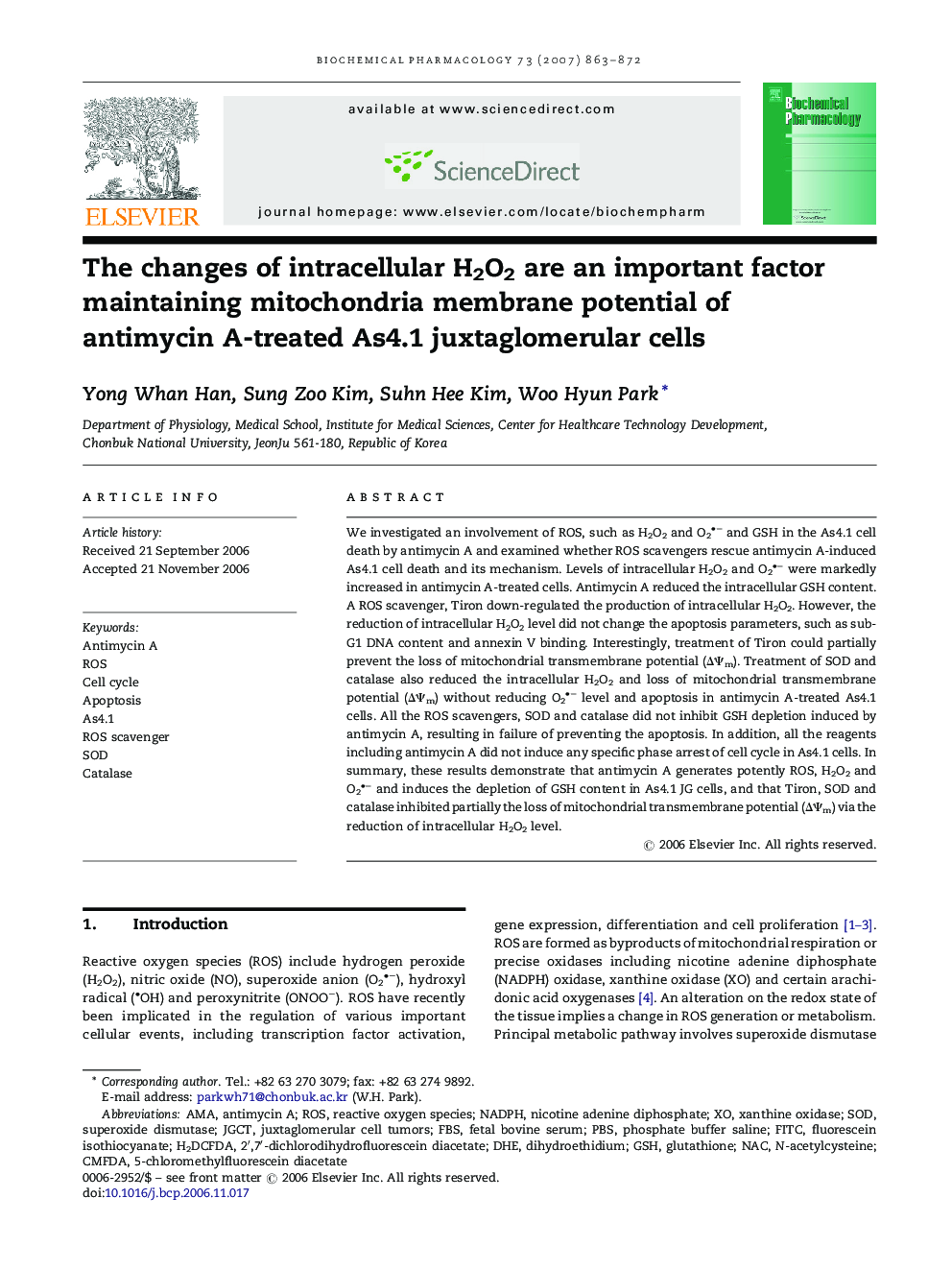| Article ID | Journal | Published Year | Pages | File Type |
|---|---|---|---|---|
| 2515064 | Biochemical Pharmacology | 2007 | 10 Pages |
We investigated an involvement of ROS, such as H2O2 and O2− and GSH in the As4.1 cell death by antimycin A and examined whether ROS scavengers rescue antimycin A-induced As4.1 cell death and its mechanism. Levels of intracellular H2O2 and O2− were markedly increased in antimycin A-treated cells. Antimycin A reduced the intracellular GSH content. A ROS scavenger, Tiron down-regulated the production of intracellular H2O2. However, the reduction of intracellular H2O2 level did not change the apoptosis parameters, such as sub-G1 DNA content and annexin V binding. Interestingly, treatment of Tiron could partially prevent the loss of mitochondrial transmembrane potential (ΔΨm). Treatment of SOD and catalase also reduced the intracellular H2O2 and loss of mitochondrial transmembrane potential (ΔΨm) without reducing O2− level and apoptosis in antimycin A-treated As4.1 cells. All the ROS scavengers, SOD and catalase did not inhibit GSH depletion induced by antimycin A, resulting in failure of preventing the apoptosis. In addition, all the reagents including antimycin A did not induce any specific phase arrest of cell cycle in As4.1 cells. In summary, these results demonstrate that antimycin A generates potently ROS, H2O2 and O2− and induces the depletion of GSH content in As4.1 JG cells, and that Tiron, SOD and catalase inhibited partially the loss of mitochondrial transmembrane potential (ΔΨm) via the reduction of intracellular H2O2 level.
